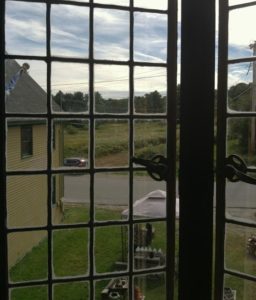The symptoms of a panic attack can include racing heart, shortness of breath, “unreal” feelings, tingling feet and hands, and dizziness. Many people have had one or more panic attacks. People develop panic disorder when they start believing that the panic means that something catastrophic is going to happen. They believe that they will die, or “loose control” or “go crazy”. None of these things is true.
All these physical symptoms are the result of hyperventilation (overbreathing). The person may not be aware of this. Panic can even begin during sleep. The anxious person starts to pay too much attention to the symptoms. This makes the physical symptoms worse, which increases the anxiety. A spiral of fear develops. Sometimes people end up at the ER because they are afraid they are having a heart attack.
Panic is frequently associated with agoraphobia (Greek for “fear of the marketplace”) People become afraid of being “cut off” from home, where they feel more safe. They restrict the places they will go more and more, and eventually may become housebound.
Panic may also become associated with particular activities, such as driving. The person is afraid of “losing control”, so doesn’t want to be “trapped” on the highway. She starts driving only on back roads. Eventually even this is too frightening, and she may stop driving altogether.
Panic disorder responds very well to appropriate treatment. It is important to see a trained, collaborative clinician who can fine-tune the treatment to your individual needs. I am a graduate of the Advanced Forum of the IOCDF.
I treat panic in adults, adolescents and children.
Call me at 508-735-4468 or email me at hturano@tsecuremail.com.

